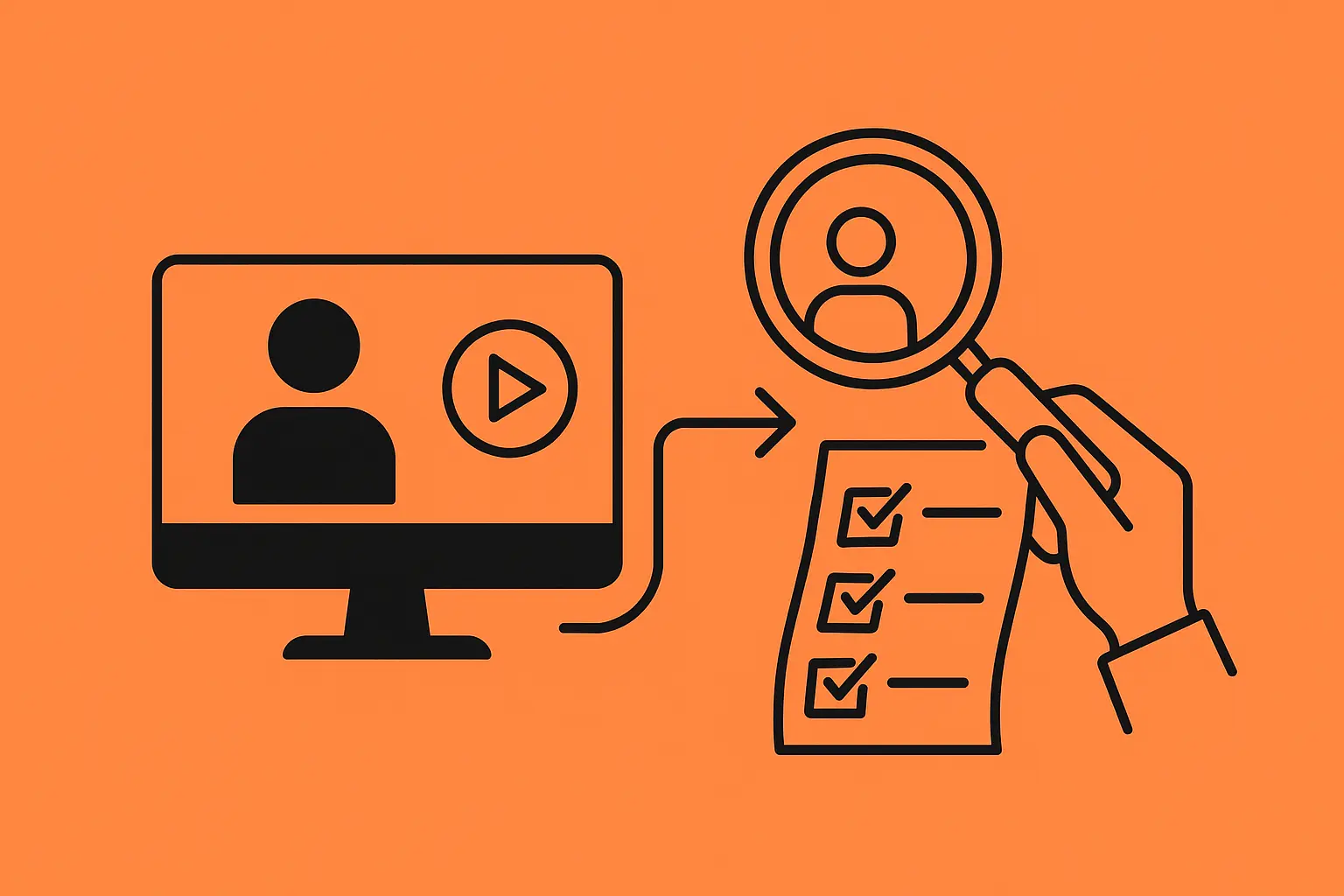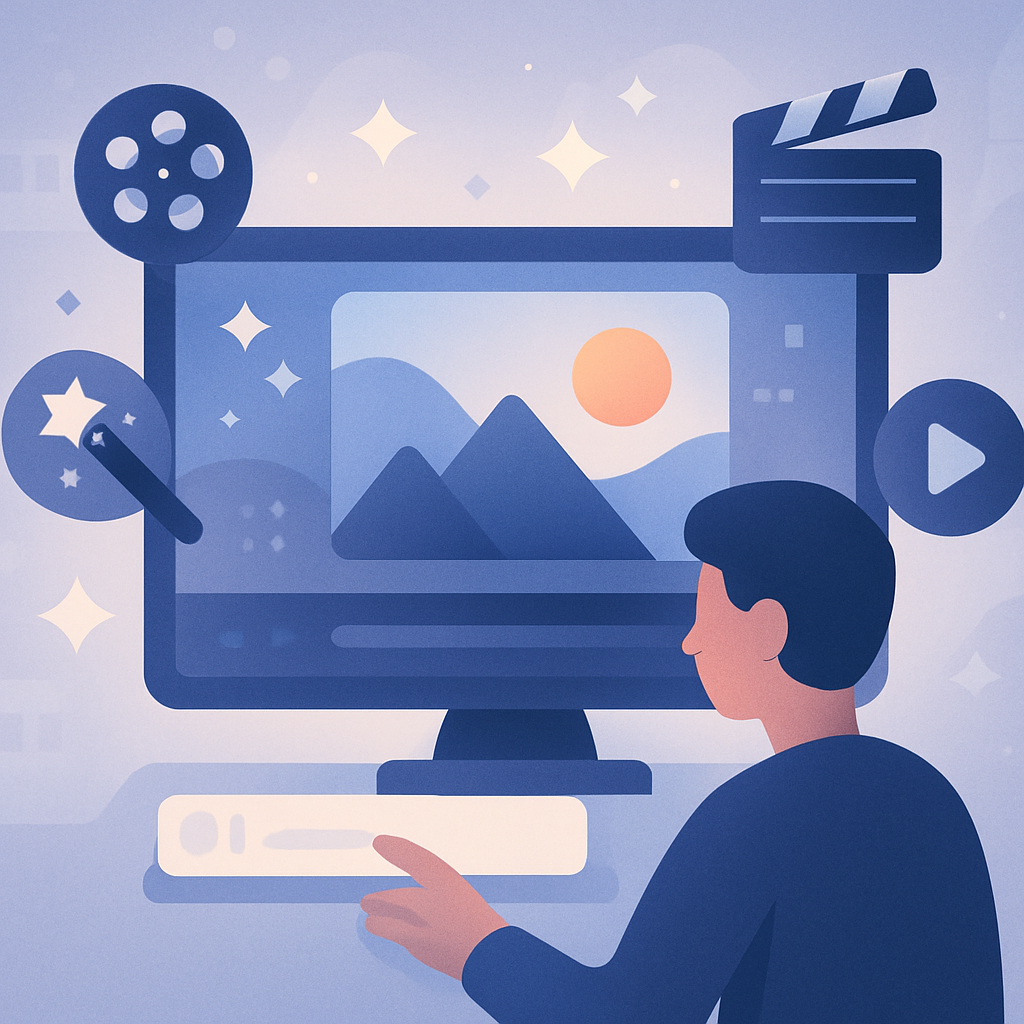
Create AI videos with 230+ avatars in 140+ languages.
Create engaging training videos in 140+ languages with Synthesia.
I've watched workplace learning evolve dramatically over the past few years, but 2025 feels different—like we're standing at a genuine turning point. Economic pressures push L&D teams to stretch every dollar, while generative AI suddenly makes the impossible seem routine. It’s clear that traditional training methods simply can't keep pace with:
- Distributed teams
- Rapidly evolving job roles, and
- The breakneck speed of business transformation.
But this urgency is also a catalyst for innovation, and that’s a good thing. What excites me most about learning and development trends in 2025 is how reactive training is giving way to proactive talent development. Taken together, nine key trends define how we build, deliver, and measure learning experiences this year.
Let’s explore them together!
What’s changing in L&D—and why 2025 matters
Several forces are converging to create what feels like a perfect storm of change in corporate learning. Economic uncertainty has forced L&D strategy discussions into the C-suite, where every dollar spent needs clear justification. Job roles are evolving faster than most of us have ever seen, while generative AI is democratizing content creation in ways that seemed impossible just two years ago.
But here's what really caught my attention: L&D professionals are no longer content to operate in isolation. Today's learning leaders position themselves as strategic business partners, directly linking employee development to measurable organizational outcomes.
This shift becomes even more urgent when you consider that 49% of L&D professionals report executives worrying about whether employees have the right skills to execute on business strategy. That makes 2025 a signal to adapt your L&D strategy or risk falling behind.
The top learning and development trends for 2025
You can already see the impact of this mindset shift in the practical choices L&D leaders are making. From my research into the latest workplace learning trends, I can see clear patterns emerging, and the following nine stand out:
1. AI is transforming every stage of the learning journey
You won’t find many L&D teams ignoring AI these days. The numbers back it up: 71% are exploring, testing, or integrating AI into their work, according to LinkedIn’s latest Workplace Learning Report, And it’s not for show—it’s to keep up with everything else that’s accelerating.
Additionally, Training Industry research shows that AI agents are now providing real-time performance support and adapting content on the fly. But what’s especially interesting is how these AI-powered tools amplify rather than replace human expertise. In my own work with L&D teams, I’ve seen script generation, video production, and multilingual localization go from time-intensive bottlenecks to quick, data-informed workflows. Learner analytics now reveal engagement patterns and content gaps in ways that were nearly impossible to capture before. I’ve also seen AI tools support personalized skill pathing and even deliver automated coaching nudges to help employees grow in-role, without the need for constant trainer oversight.
This is what the future of AI-powered workplace learning looks like: responsive, efficient, and deeply personalized.
2. Microlearning goes mainstream
What if the very challenges making workplace learning harder—distraction, pressure, lack of time—are the same forces accelerating innovation in how we train?
That’s exactly what’s driving the continuous rise of bite-sized learning experiences as the dominant format in modern training strategies. Microlearning modules that deliver focused content in 3-5 minute segments perfectly match how today's professionals actually consume information throughout their workday.
McDonald's global rollout of educational programs like Archways to Opportunity perfectly exemplifies this trend in action: They've successfully deployed microlearning content in 13+ languages for frontline staff across thousands of locations worldwide. What makes this approach so compelling, in my opinion, is how modular content structure allows rapid adaptation to local requirements while maintaining absolutely consistent core messaging.
And for L&D teams managing tight timelines and limited budgets, that same modularity makes microlearning dramatically more efficient to produce, update, and scale.
3. Scenario-based learning becomes the new gold standard
Building on this efficiency trend, interactive simulations are rapidly replacing passive content consumption as more and more organizations prioritize practical skill application over simple information transfer. Scenario-based learning creates psychologically safe environments where employees can practice handling real-world challenges, from navigating difficult customer conversations to solving complex workplace problems without fear of making costly mistakes.
Even more revolutionary is how video-based scenarios powered by AI avatars have eliminated the coordination complexity that once made such training prohibitively expensive. Teams can now experience challenging customer service interactions through sophisticated branching narratives that adapt dynamically based on individual learner choices.
The payoff is clear. Deloitte research shows immersive formats like these can drive retention rates as high as 75%, far outperforming traditional lectures, presentations, or reading-based training.
4. Internal mobility and skills-based progression gain traction
Speaking of retention, career development is undergoing a fundamental transformation from title-based advancement to skills-focused growth as organizations compete more fiercely than ever for top talent. LinkedIn calls this shift “skills-based internal mobility,” and it’s shaping how L&D teams design learning experiences with career progression in mind. This year, 55% of career development champions have made it their top priority.
But what's driving this shift? Retention challenges have become the primary catalyst—88% of organizations now cite meaningful learning opportunities as their number-one strategy for keeping employees actively engaged. So, skills have essentially become the new currency of career advancement, replacing traditional metrics like tenure or rigid departmental boundaries with measurable competencies.
IBM’s “Your Learning” platform offers a clear example of how this approach works at scale. Their AI-powered system personalizes employee development experiences based on both current role requirements and individual career aspirations, delivering impressive results. Here, research shows that 99% of employees are actively engaged with the platform, averaging over 70 hours of learning annually.
5. Video overtakes text as the preferred training format
Considering how much engagement shapes learning outcomes, it's no surprise that visual learning has decisively won the format wars in 2025. Video has become the default medium for training delivery across virtually every type of content:
- Technical skills development
- Compliance requirements
- Leadership development
- Onboarding and orientation programs
- Sales enablement training
- Soft skills training.
Each of these areas benefits significantly from video-based instruction that naturally accommodates different learning styles and preferences.
Companies like Teleperformance and Ocado Group perfectly demonstrate this transformation in practice: They've successfully scaled video training programs across massive global workforces while maintaining remarkable consistency and quality standards. What once seemed like insurmountable language barriers now dissolve through automated translation and AI-generated voiceovers that adapt existing content for local audiences without requiring teams to rebuild entire programs from scratch.
I've worked with teams that have seen firsthand how AI video creation operates 80% faster and proves 5x more cost-effective than traditional production methods. This explains why L&D teams are rapidly adopting these tools to address engagement challenges and resource constraints.
6. Leadership training expands beyond managers
Interestingly, while video democratizes content creation, leadership training is undergoing its own democratization. In 2025, more and more organizations recognize that leadership skills benefit employees at every organizational level, not just those holding formal management titles. This broader access is changing how teams operate in practice: Early-career leadership development programs are building stronger succession pipelines while simultaneously improving team dynamics and cross-functional collaboration throughout entire organizations.
Another thing I’ve noticed in these expanded programs is the rise of human-centered leadership competencies. Empathy, conflict resolution, and emotional intelligence have become core elements of the curriculum.
In other words, technical expertise alone simply doesn't guarantee success in modern workplaces where cross-functional collaboration and effective change management define daily operational reality. That’s why many teams are offering flexible, self-directed learning opportunities, giving employees the chance to build leadership capabilities without having to wait for a formal promotion.
7. Human skills take center stage in learning strategies
This emphasis on human-centered leadership reflects a broader paradox: automation anxiety has created an unexpected increase in focus on uniquely human capabilities that resist technological replacement. In this context, LinkedIn's research reveals that 91% of L&D professionals now agree that human skills are becoming increasingly important as artificial intelligence handles more routine, predictable tasks.
Capabilities like resilience, adaptability, and empathy are rapidly becoming genuine competitive advantages in AI-augmented workplace environments. Unlike technical skills that require constant updating as technology evolves, human connection and emotional intelligence remain remarkably stable value drivers that transcend industry boundaries. No wonder many training programs now emphasize communication excellence, collaborative problem-solving, and creative thinking as core competencies rather than supplementary soft skills.
What I find particularly encouraging is how visual scenario-based learning, again, offers a practical way to develop these human skills in context: By simulating real-world interactions, it gives learners a chance to practice these new key capabilities in environments that feel safe but realistic, making the learning both sticky and measurable.
8. Training becomes more accessible and inclusive
Alongside this focus on human skills, universal design principles are reshaping modern learning experiences as organizations recognize both the ethical imperatives and substantial business benefits of truly accessible training programs. And the need is clear: The Training Industry data also shows that 15% of employees in large companies have diagnosed learning disabilities. So, prioritizing inclusive design is essential for reaching and supporting the full workforce.
Yet, practical accessibility features benefit all learners, not just those with specifically identified needs or disabilities:
- Captions improve comprehension in noisy work environments
- High-contrast visual designs support effective mobile viewing
- Multiple content format options accommodate vastly different learning preferences and situational constraints.
For global teams, that inclusivity must also scale, meaning across languages, regions, and delivery formats. That’s where AI-powered localization makes such a difference. It clears away language barriers. It adjusts tone and phrasing so content lands well in different cultures. And most importantly, it helps ensure learners everywhere experience training that feels relevant, not generic.
9. Well-being and mental fitness become L&D priorities
And finally, it’s time to acknowledge that workplace stress directly undermines learning effectiveness and overall performance. In fact, 47% of employees in the UK and US say that most or all of their stress stems from work-related factors—stress that inevitably spills over into their ability to focus, absorb new information, and perform at their best.
In response, mental health support is shifting from a standalone HR initiative to a core part of L&D strategy, as organizations increasingly acknowledge the link between well-being and learning outcomes. Stress management techniques, resilience-building strategies, and proactive burnout prevention are now entering mainstream training curricula across industries.
Here, healthcare organizations (like The Ohio State University’s Wexner Medical Center or Mount Sinai’s Center for Stress, Resilience, and Personal Growth) and retail companies (like Kate Spade’s MHFA at Work initiative) are leading the way, offering structured mindfulness modules and evidence-based resilience training for frontline teams operating in high-pressure environments.
Final thoughts: Building a learning strategy that lasts
Trends come and go. But sustainable strategies adapt. That’s why the most successful L&D teams are proactively designing flexible systems that can adapt continuously to whatever changes come next.
Three strategic shifts define the most durable approaches I'm seeing:
- Wholehearted embrace of video-first content creation
- Systematic implementation of skills-based development pathways
- Thoughtful integration of AI-powered personalization into every aspect of the learning process.
These L&D trends represent far more than tactical adjustments or temporary responses to current challenges. They signal fundamental, lasting changes in how organizations develop talent, measure training success, and compete effectively for employee engagement in 2025 and beyond.
About the author
Strategic Advisor
Kevin Alster
Kevin Alster is a Strategic Advisor at Synthesia, where he helps global enterprises apply generative AI to improve learning, communication, and organizational performance. His work focuses on translating emerging technology into practical business solutions that scale.He brings over a decade of experience in education, learning design, and media innovation, having developed enterprise programs for organizations such as General Assembly, The School of The New York Times, and Sotheby’s Institute of Art. Kevin combines creative thinking with structured problem-solving to help companies build the capabilities they need to adapt and grow.

Frequently asked questions
What is the biggest learning and development trend in 2025?
The most significant trend is the integration of AI across the learning journey—from content creation to real-time coaching—making training faster, more personalized, and data-driven.
Why is microlearning so popular now?
Microlearning fits modern work rhythms. It delivers short, focused content that’s easier to consume, retain, and apply—ideal for busy, distracted employees across roles and industries.
How are companies using video in training programs?
Organizations are using AI tools to create video content faster and at scale. Video is now the preferred format for everything from onboarding and compliance to leadership and soft skills training.
What’s driving the shift to skills-based internal mobility?
With retention a top concern, companies are moving away from title-based promotion toward measurable skills development, helping employees grow in-role and across teams.
How does L&D support employee well-being in 2025?
Mental fitness is now central to learning strategies. Companies are integrating stress management, resilience training, and mindfulness into their L&D programs to boost engagement and performance.














